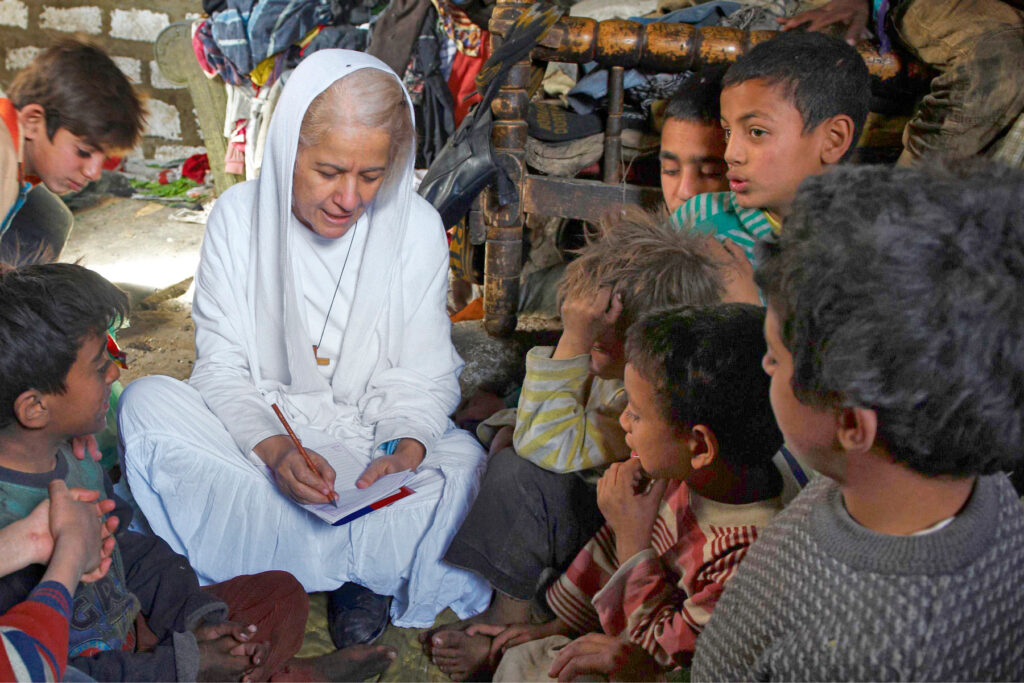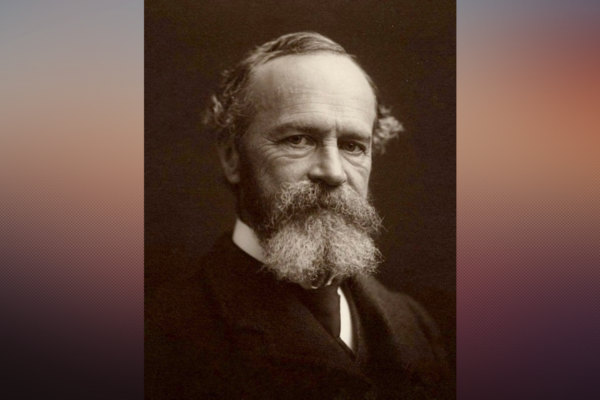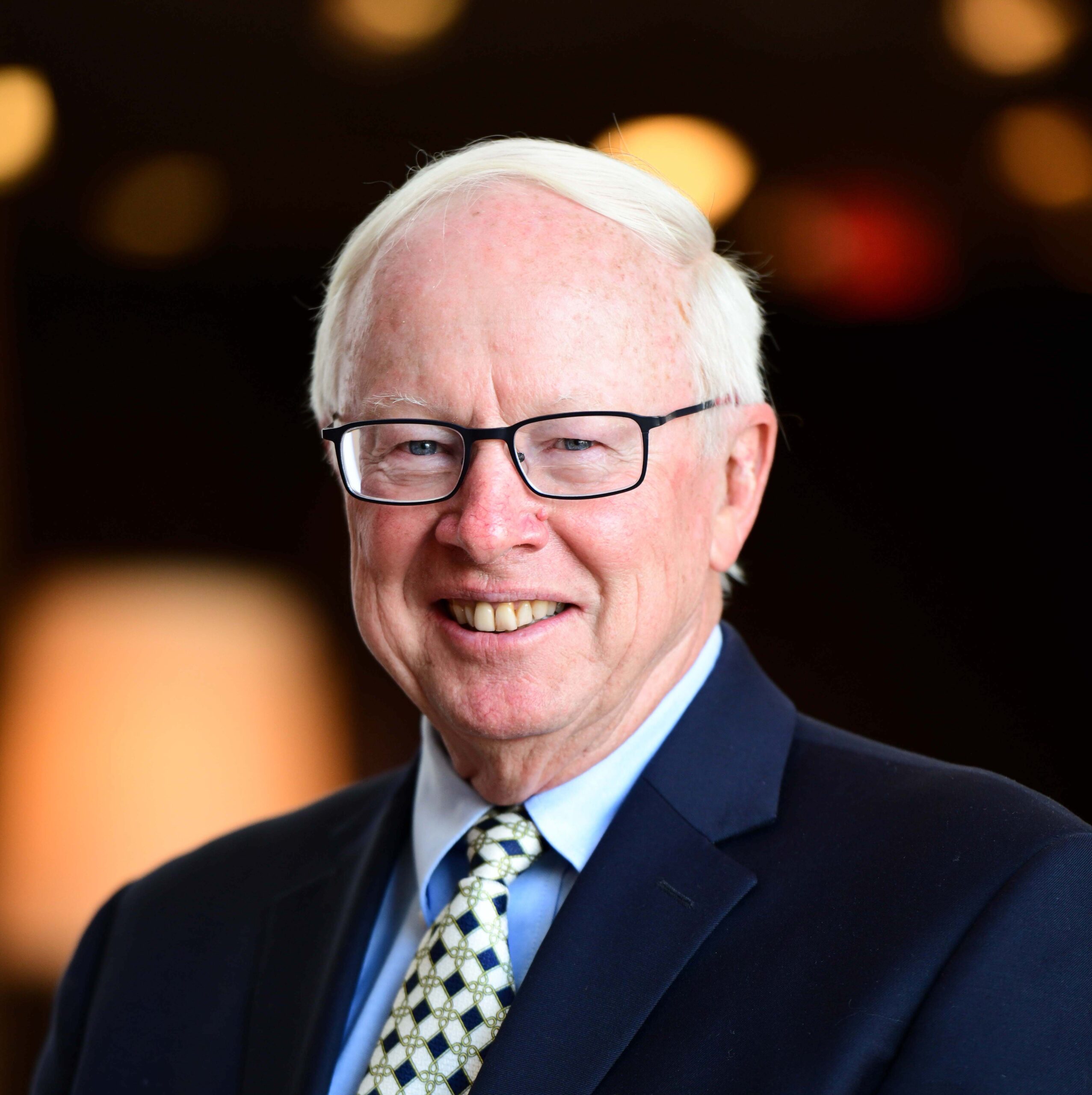William James was the inspiration for our project on “spiritual exemplars” at the USC Center for Religion and Civic Culture. James, a philosopher and psychologist, believed that one learns more from what he called “religious geniuses” than from surveys of ordinary people.
This led our project team to develop a database of more than 500 people from around the world who were exceptional because of the humanitarian work they had done and were notable because of their religious values and spiritual practice. Eventually, we worked with journalists and researchers to profile 104 “spiritual exemplars” in 42 countries, representing 13 different religious traditions.
While other theorists shaped the project,1 James was its touchstone. In addition to James’ focus on exceptional people, several other elements of his thought have guided our research: 1) his acknowledgement of the “reality” of religious experience, 2) his pluralistic view of religion, 3) his appreciation of the social role of religious geniuses and 4) his pragmatism.
At the same time, James’ perspective is incomplete in that he is very psychological in his approach and ignores the communal and institutional role of religion, a critique posed by the philosopher Charles Taylor in his analysis of James. Yet, ultimately, James’s emphasis on “will” or volition illuminates how exemplars’ spiritual understanding allows them to take agency in the face of difficult social issues.
James is regarded as America’s most original philosopher; in addition, he is often referred to as the father of American psychology. His father was the Swedenborgian theologian Henry James Sr., and his brother was prominent novelist Henry James. His most famous book related to religion is Varieties of Religious Experience, which is still used as a resource book for many people in Alcoholics Anonymous. The Principles of Psychology is his groundbreaking text in psychology. Along with Charles Sanders Peirce, James established the philosophical school known as pragmatism.
The Reality of Religious Experience

Maggie Gobran, known in Egypt as Mama Maggie for her care of poor Coptic children, is a mystic. She spends two months in a monastery while running an organization that serves thousands of children and families. In my interview, she described hearing God’s voice and having visions in dreams. A skeptic who appreciates all she has done as a humanitarian might still have difficulty understanding these experiences or might try to rationalize them away.
James rejected reductionism and affirmed the reality of religious experience even though he was not particularly religious. Instead, as an empiricist, he said that one cannot ignore the fact that people throughout the ages have religious experiences. To make his point, James cited hundreds of cases of dramatic experiences, drawing on a compilation put together by the author Edwin Starbuck.
For James, mystical experiences are the apex of religion. They have a reality that no amount of logic, rationality or scientific exploration can refute. He thought all the major founders of religious movements have had deep religious experiences of a mystical sort. He said that “automatisms” are common among these individuals, referring to visions, voices, ecstasies, etc. These occur in the form of dreams, but also unexpected encounters with an “unseen” reality — what he sometimes referred to as something “More.”
James said there are four qualities of high-level mystical experiences: They are ineffable (meaning, they defy rational explanation); they have a noetic quality (they yield insight beyond rational and intellectual pursuit); they typically are transient (lasting a few moments and seldom more than a half hour); they are passive states (meaning, one feels acted upon rather than being the agent).
There are also a variety of religious states of consciousness that don’t reach the apex of mystical experience, but nevertheless are different from everyday consciousness and are highly valued by individuals. In these religious states, one feels that they are in the presence of an unseen reality that is beyond the ego-driven self. This unseen reality is variously described as God, the divine, the sacred or the holy.
In studying exemplary humanitarians, we found numerous examples of mystical experiences in which exemplars felt a connection to a divine or transcendent force. A single transient moment could shape their entire outlook and career. Some pointed to dreams as their inspiration for engaging in their work or spoke of hearing God speak to them. Others experienced something sacred in the ordinary, whether they were a humanist putting water out for migrants in the desert or a priest working alongside a coffee worker in Honduras.
While we cannot say such experiences are universal among spiritually-inspired humanitarians, what we found echoed James’ understanding of “something more” — across religious lines and even among non-religious.
Religious Pluralism
Different traditions have various ways of accessing the realm of the sacred. For example, Hindus may practice yoga; Buddhists may meditate; Jews may chant prayers; and Indigenous people may beat drums and dance. In this regard, James was a pluralist. He believed that there was a reality to every religious tradition and did not privilege one over the other, even though many of his examples are from the Christian tradition. Likewise, the spiritual exemplars project wanted to understand how these spiritual experiences applied to humanitarians across faiths.
Every religious tradition has methods and techniques associated with the pursuit of mystical experience as well as sacred states of consciousness. All of these involve quieting our ego-driven desires for dominance, control and power. Various ascetic practices span religious traditions as ways to conquer the self so that one may experience a “higher” self, a reality beyond oneself. But one could also include pilgrimages, retreats, fasting, all night prayer sessions, and so on.

Are “Spiritual Exemplars” Saints?
Saints have four characteristics, in James’ mind. First, saintly people have a “wider life,” living in a “faith state,” in which petty issues of self-interest falls away. Second, they have a conviction that an “Ideal Power” exists to which they surrender themselves; this Power is synonymous with moral ideals, utopian possibilities and holiness. Third, self-surrender results in feelings of freedom, power and elation as self-preoccupation disappears. And fourth, there is a shift in their emotional center towards more harmonious affections, saying “yes” rather than “no.”
In addition to these characteristics of saints, there are four consequences of saintly practice according to James. First, saintly people often practice various forms of asceticism or self-denial. We found that for many of our exemplars, living simply was not simply pietistic virtue, but an ethical path that gave them the freedom to give their lives in service of others.
Second, they have a “strength of soul” which is experienced as inward tranquility, joyousness, optimism and peace that gives them power to face challenges. One of the paradoxes we have identified about exemplars is that they exhibit such qualities as joy and peace while feeling the despair of others so deeply.
Third, they are focused on an inner purity that differs from ego-driven goals. We cannot say this applies to all exemplars; we are aware that there are material conditions and ego needs that play important roles for all people involved in humanitarian work, including the exceptional people we have interviewed.
Fourth, and perhaps most important for our project, is James’ emphasis on charity, which is described as a “tenderness for fellow creatures,” manifest as love of others, including enemies and regard for “beggars” (i.e., the vulnerable). They affirm that God is the “father” of all people, meaning that everyone has equal worth and value.
And, finally, in William James’ opinion, saints throughout history have been a creative social force. They are “vivifiers and animators of potentialities of goodness.” They are essential for social evolution and are forerunners of good things that may occur. They are leaven of a better social order, even if their utopian dreams are not always practical. James does not use this term, but I think he would agree with my description of our spiritual exemplars as “counter-cultural”—they don’t fit with the schemes of normal people. They operate on a different plane, a “faith” level of consciousness that is renewed through regular religious experiences.
Within the Catholic tradition, for example, there is a process for identifying someone a saint. But we have no intention of elevating our sample of exemplars to this status. Nevertheless, they embody many of the characteristics that James identifies with saints.
Pragmatism
It is at this point that one sees William James’ pragmatism most clearly. The test of religious experience is its fruits, not its roots. The focus is on the usefulness of religion, not its metaphysical claims. James thought that religious experience potentially results in greater power to do good in the world. He is convinced that there is “something more” beyond the material world.
In our project on Spiritual Exemplars, we were very much in James’ camp, not debating the religious truth of any particular theology, metaphysic or practice, but looking at the effects of these on society in specific programs and projects.
The Communal and Institutional Role of Religion
James had a decidedly individualistic definition of religion, which he defines as “…the feelings, acts, and experiences of individual men in their solitude, so far as they apprehend themselves to stand in relation to whatever they may consider the divine.” He saw religious institutions as secondary accretions, which are attempts to rationalize the encounters of the founders of religion with the divine. Likewise, he saw all theology as “over-beliefs,” attempts to explain the meaning of mystical experiences. What is primary to religion, however, are primitive encounters with an unseen presence, variously described as God, the gods, or whatever terms have evolved in the culture for such experiences.
In Charles Taylor’s book, Varieties of Religion Today: William James Revisited, he argues that the focus on experience over institution has created a marketplace of religious products. Taylor believes this expressive individualism is dangerous, disconnecting private religious experience from a commitment to the common good.
While Taylor may distort James’ views, his critique nevertheless helped us frame our project on engaged spirituality. Namely, we are not interested in the role of spirituality to make one a more creative computer programmer and therefore a better employee for Apple or Google. Nor were we interested in spirituality as a means to greater individual happiness, which many gurus of the spiritual life sell to depressed Americans caught in a consumer economy. We were interested in the role of spirituality as a resource to people involved in humanitarian activities—where spirituality is not a purely personal consumable product, but a set of practices and experiences that inspire, sustain and empower one in promoting the common good.
As a Catholic, Taylor rejects many of James’ formulations, which he finds very Protestant. But he also critiques James philosophically. First, purely private religious experiences have no meaning until they are interpreted in light of cultural and religious frameworks. Furthermore, personal religious experiences have no motivating power for others until they are hitched to ideas and transmitted through ritual and institutional modalities.
Therefore, Taylor offers a helpful corrective to James’ individualistic emphasis. Yes, religious experience may be the fountain from which all religions emanate. Religious experiences also are a potential engine of innovation, which is why they may have a heretical and counter-cultural effect when they are shared. But religious experience takes on meaning only in the “retrospective glance” in the stream of consciousness, and this reflection on mystical experiences, for example, always involves a filter of interpretation.
This interpretive filter will inevitably draw on ideas and cultural formulation from one’s surroundings, but there may be “breakthrough” ideas that are not merely mirror images of what others have thought. This is where I’m not sure that Charles Taylor sufficiently appreciates James’ contribution. Taylor seems a little too comfortable in the power of Catholic rituals and belief structures.
The Will to Believe
In an essay titled, “The Will to Believe,” James argued for exploring the possibility of an “unseen” reality. Relevant to our project on Spiritual Exemplars is not his Pascalian wager that it’s better to believe than not, but his focus on volition and will.
James was arguing about two different issues of his time — and in many ways, these issues also are debated in the 21st century. First, he was consumed with the issue of determinism and whether there was free will or choice. Stated differently, are we just a product of our environment and genes? Or do we have a role in shaping who we are? The second issue that concerned him was materialism, the doctrine that nothing exists except matter and its movements and modifications.
At various points, James was troubled by depression and contemplated suicide. It is from these struggles that he created the concept of the “sick soul” and the “divided self,” which he contrasted with “healthy minded” people and religion.
With free will, James argued, one has a choice when confronted with the problem of meaning. One can despair and remain depressed, or one can make choices that lead in a different direction. This insight later led to the James-Lange theory of emotion. Stated simply, either your emotions determine your behavior, or your behavior (choice/free will) can determine your emotional state. James elected the second option.
The sick-souled person stands on the “cusp” of despair and has a choice to make. Rationally, belief in the unseen may make no sense, argue the materialists — the secularists, in today’s terms. You cannot reason your way to belief; it requires a choice — just like marriage and many other actions in life where you don’t know the outcome. But in the very act of “willing” — and of loving — realities open that otherwise would have been closed to you.
This takes us to the role of emotion in choosing to act. The “will” to do something is not just a matter of the head; it also involves feelings, according to James. Some of our biggest decisions are matters of the heart. These are decisions to which our rationality would say “no.” But should we rule out empathy, passion or righteous rage in our decision making? To do so would make us bystanders, doing nothing.
Now apply this Jamesian insight to our spiritual exemplars. They all make a choice at different points — to go to Guatemala or Sudan; to stay in and serve the village where they grew up; to expose themselves to poverty; to latch onto an impossible task, such as stopping climate change. Like the “Will to Believe,” only then are new realities, previously “unseen,” opened up to them. They are grasped, unable to turn back to a “normal” life. They persevere against all odds, in part because the unseen, the divine, becomes present to them — perhaps in unexpected, irrational ways that they could never have anticipated.
Commentators have often compared James’ “Will to Believe” argument to Pascal’s wager: What do you have to lose if you choose to believe in God? Nothing if God doesn’t exist, but a whole lot if God does exist. However, James’ argument is more subtle, more complex. It is also different from Soren Kierkegaard’s “leap of faith.” For one thing, James was a pluralist, and so he was not arguing for any particular “truth.” There are many truths. And he contextualizes the choice within the problem of meaning — for him, despair, the divided self. But maybe the biggest difference between James and Pascal or Kierkegaard is that he was a psychologist who understood emotions and had a theory of choice that involves feelings.
James illuminates the fact that all of our spiritual exemplars made choices; oftentimes many choices, that defined who they became. In short, James shines a spotlight on free will in the face of despair. He poses a powerful counter argument to secularists who deny the reality of the unseen. Our exemplars have seen the unseen; it is the operating basis for lives led in the service of humanity.
- Other theories that were important to our project included the philosopher Linda Zagzebski’s moral theory on exemplarism, Dan McAdam’s work on life history, and Tanya Luhrmann’s suggestion that people believe because they practice, not the reverse. ↩︎
Donald E. Miller is the co-founder of the USC Center for Religion and Civic Culture.





